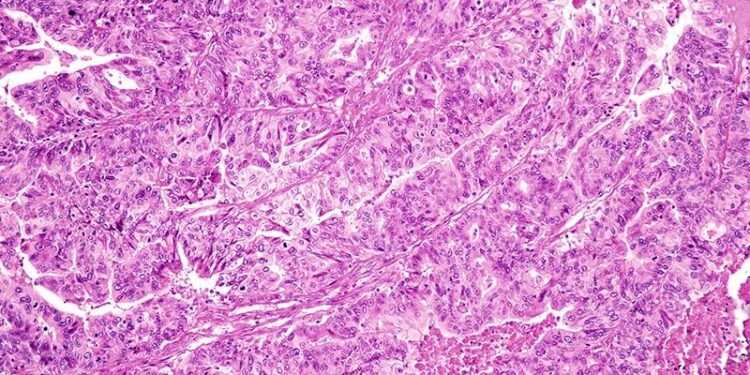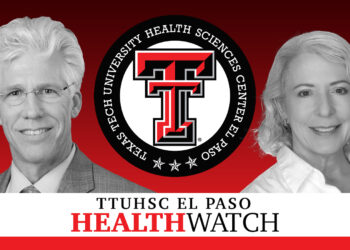Opportunistic salpingectomy (OS) is feasible but not performed in almost a quarter of patients later diagnosed with high-grade serous carcinoma (HGSC), and about 40% of patients with a first-degree family history of ovarian cancer are not tested for genetic susceptibility prior to diagnosis, according to analysis of a retrospective review.
These findings suggest that more work is needed to optimize HGSC prevention, particularly in light of limited treatment options, Sara Moufarrij, MD, lead author of a paper reporting these results, and colleagues wrote.
“While OS is not expected to prevent the 10% of ovarian cancers that arise from the ovarian stroma or germ cells, it is projected to reduce the risk of the most common, deadly type of ovarian cancer — HGSC — by nearly 80%,” the investigators wrote in JAMA Surgery. “Robust data support OS as standard of care at the time of hysterectomy and as an alternative to tubal ligation. There are likely other opportunities for integrating OS into routine surgical practice, such as when postreproductive women undergo other elective abdominopelvic surgeries.”
The new study combined a retrospective review of 1877 HGSC cases treated at Johns Hopkins and Memorial Sloan Kettering (2015-2021) with a national cross-sectional survey of 917 women in the Ovarian Cancer Research Alliance, including 348 with HGSC.
Missed opportunity was defined as either a sterilization procedure (bilateral tubal ligation or hysterectomy without concurrent salpingectomy) at any age, or another abdominopelvic surgery at age 45 or older when salpingectomy could have been performed at least 1 year before diagnosis. The cutoff age of at least 45 years reflected data showing most women complete childbearing by that age.
Among the 1877 patients in the retrospective cohort, 445 (23.7%) missed a surgical opportunity for salpingectomy. Of these, 54% were sterilization procedures and 46% were nongynecologic abdominopelvic surgeries, most often cholecystectomy, hernia repair, and bowel surgery. In the survey cohort, 11.5% reported a history of bilateral tubal ligation or hysterectomy without concurrent salpingectomy and 4% reported a history of abdominal surgery at 45 years or older without concurrent salpingectomy, meaning 15.5% missed an opportunity for the procedure.
Moufarrij, of Memorial Sloan Kettering Cancer Center, New York City, and colleagues also assessed germline genetic testing in the retrospective cohort. They found that 111 patients (6%) had a first-degree family history of ovarian cancer. Among these patients, 43.2% were found to have a genetic susceptibility to ovarian cancer that was detected after diagnosis.
How Does New Research Compare With Earlier Studies?
Prior modeling suggested that universal OS during hysterectomy, in lieu of tubal ligation, could reduce ovarian cancer mortality by 14.5% and save $445 million annually.
“We really did not have a great sense of how many cancers could be prevented this way,” Gillian Hanley, PhD, associate professor, Department of Obstetrics and Gynecology, at University of British Columbia, Vancouver, British Columbia, Canada, told Medscape Medical News. This study provides “one of the first clear estimates” of preventable HGSC cases, she said.
“By anchoring our analysis to the very population the intervention is designed to protect, we highlight the true magnitude of missed opportunity for prevention,” principal author of the new study, Rebecca L. Stone, MD, told Medscape Medical News.
The study is also notable for including genetic testing and general abdominal surgery as forms of missed opportunity, not just gynecologic surgery, said Stone, of Johns Hopkins School of Medicine, Baltimore.
How Can Clinicians Use These Findings in Practice?
“The take-home message is that we have an opportunity to dramatically reduce HGSC rates and save many lives,” Hanley said. “We need to organize in order to take advantage of this opportunity.”
This means educating candidate patients — even those without pathogenic variants that increase their risk — Hanley said, noting that “when people are properly counseled, they overwhelmingly choose OS.”
To realize the full potential for OS, however, these conversations, and the procedures themselves, will need to be conducted beyond the surgical gynecology service.
“High-volume abdominal procedures such as cholecystectomy, hernia repair, and bowel resections present the most logical next frontier for implementation,” Stone said. “Engagement of general and colorectal surgeons is therefore a critical step in expanding the reach and impact of OS.”
In an accompanying editorial, Lauren Gilgannon, MD and Linda R. Duska, MD, of University of Virginia School of Medicine, Charlottesville, Virginia, agreed but cautioned that achieving this goal will require “novel and complex perioperative processes.”
What Are Barriers to General Surgeons Performing These Procedures?
The editorialists listed an array of financial, practical, and technical questions that will need to be addressed. These included: ‘Will these be joint surgeries, or will the general surgeon perform them alone?’ and ‘How will the procedures be billed, and by whom?’
“Not all barriers to implementation are clear and they vary across hospitals, practices, patient demographics, socioeconomic status, and jurisdictions,” Gilgannon and Duska wrote.
“In order for this to work, general surgeons need to be compensated for doing this, so that is an important policy step,” Hanley said. “They also need to feel comfortable and confident doing a salpingectomy, so offering general surgeons many different ways to learn salpingectomy has been important here in British Columbia, where we are actively expanding OS to general surgery.”
Stone offered concrete steps to improve OS access in the US, including payer reform, guideline development, provider education, and better detection of tubal precancer.
How Could Public Education Increase the OS Rate?
Outside of the medical system, Hanley suggested that educating the public about OS can yield immediate and tangible benefits.
“If more people come in asking for salpingectomy, already knowing what it is and why they want it, then we make it much easier for surgeons to offer this as part of their practice,” she said. “The time it takes to counsel patients will be much smaller if we can increase general knowledge about OS.”
To this end, Stone envisions a future in which salpingectomy becomes a household word alongside other mainstays of preventive health.
“Education about salpingectomy must be woven into natural nodes of the healthcare journey, alongside conversations about contraception, pap smears, mammography, and colonoscopy,” she said.
This study was supported by the National Institutes of Health/National Cancer Institute Cancer Center and Break Through Cancer Foundation. The investigators disclosed relationships with AstraZeneca, Biom’Up, BioNTech SE, and others. The editorialists reported no conflicts of interest. Hanley coauthored a separate publication with Stone that is currently undergoing peer review.
Source link : https://www.medscape.com/viewarticle/high-grade-serous-carcinomas-follow-missed-salpingectomies-2025a1000m0c?src=rss
Author :
Publish date : 2025-08-20 12:50:00
Copyright for syndicated content belongs to the linked Source.












